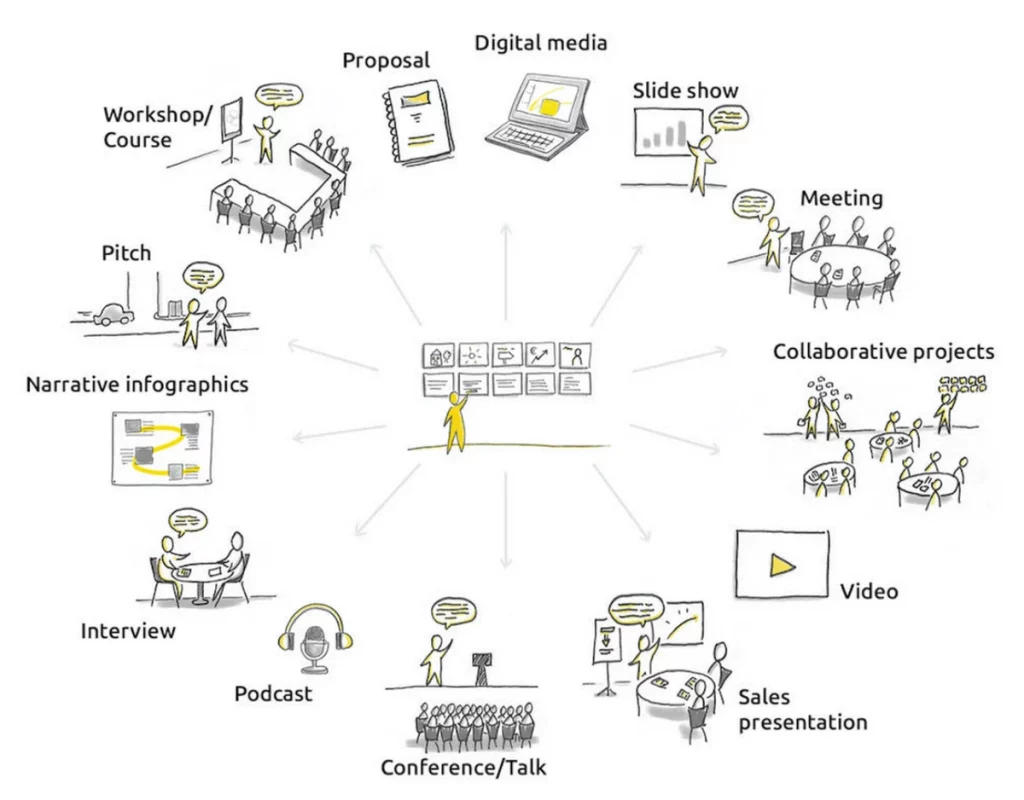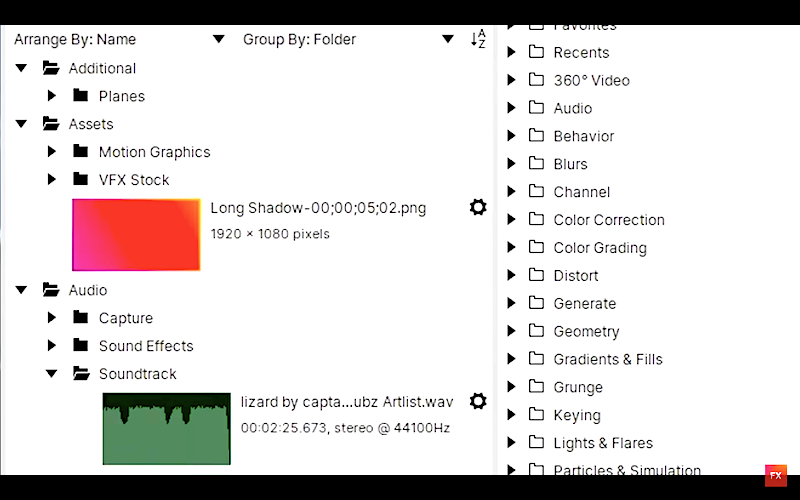Video marketing has become one of the most appealing marketing strategies for digital success. However, video editing is a time-consuming and challenging process.
Unless you already have a post-production strategy, reviewing and editing a video may take longer than expected.
Over the years, we’ve worked with various clients, creating and editing videos. So, we’ll share our wealth of experience on how to streamline your video editing process.
Whether you’re creating content for social media, website, internal marketing, or digital advertising, the tips below can help you save time. Let’s get started!
1. Make a Realistic Plan
Creating a pre-production plan is key to the success of your video editing project. It enables you to inform your team of all production requirements in crystal clear terms.
As described in the Attrock article, inadequate pre-production planning is one of the biggest video editing mistakes you can make.
Here are some things to include the following:
- The type of footage, transitions, and effects suitable for the video. This will depend on the type of video and the channel.
- For example, social media videos may require more effects and elements that engage the audience.
- An educational video for your website or YouTube channel may be better off with minimal transitions and effects to not distract the audience.
- If you intend to add narration or voiceover, now’s the right time to write the script, ensuring it fits into the video naturally. The narrator should get the script in time for adequate rehearsals.
- If you’re coordinating the project with other editors, you can split tasks into bits to speed up the video editing process. However, everyone must work closely to ensure consistency. Using time tracker software will help you monitor the time spent on each task, ensuring that the project stays on schedule.
You can use a storyboarding tool to ensure that team members are aligned with the entire creative plan. It’s also a helpful method for communicating ideas, whether through video conferencing or a face-to-face meeting.
Below are other scenarios for using a storyboard to give life to your vision.
2. Invest in Creative Solutions
There are various professional video editing software and you need to choose the right one to get success. The latest video editing platforms have time-saving functionalities that can help streamline your video editing process.
Choose tools that offer the following:
- Task automation: Many video editing tools leverage machine learning and artificial intelligence to automate repetitive tasks, such as content analysis, audio syncing, and color correction.
- Smart and collaborative editing: AI-powered tools can analyze footage intelligently, track objects precisely, and suggest enhancements or edits. Additionally, AI video generators can create compelling visuals, making the editing process even more efficient. Because they’re cloud-based, teams can work remotely and share project files with ease.
- Hardware acceleration: Modern tools utilize powerful graphic processing units (GPUs) for speedy rendering and playback. This drastically reduces the time you’d spend waiting for a video preview and final export.
- Automated content adaptation: You can easily optimize your content for different social media platforms. For instance, the editing software can automatically adjust resolutions, aspect ratios, and other settings to help content marketers save time on repurposing videos.
By investing in cutting-edge video editing tools, you can leverage AI in social media marketing and other marketing activities. It significantly enhances their efficiency, allowing for a seamless video editing process.
3. Organize Your Digital Assets
An organized file structure saves time, reduces the risks of errors, and promotes efficiency.
Here are some steps you can take to organize your digital assets for a streamlined video editing process:
- Create a main folder for each project. This will serve as a central location for all video assets you’ve gathered for that project.
- Create subfolders for different asset categories. These include footage, graphics, audio, and exports.
- If you’ve updated or reviewed any aspect of the project, ensure to save and label the new version appropriately.
- Also use metadata and tags like dates, location, camera used, shot type, and scene number to avoid confusion.
Here is an example of how you can organize video files for editing:
Implementing these strategies creates a structure for your projects. Instead of wasting time searching for files, you can focus on improving your creativity.
4. Utilize Proxy Files
Resource-intensive or high-resolution video footage can lag or halt your computer. Also, it may contain an incredible amount of detail that may result in unnecessary editing.
However, using a smaller file size without affecting the final quality of your video can reduce the video editing cost and make you more productive.
A proxy file is a low-resolution copy of your source footage that facilitates a smoother editing process.
Using proxies in your video editing enables playback in real-time even in less powerful computers. This way, other project collaborators can preview the video without rendering it, ensuring a dynamic editing experience.
5. Use Templates and Presets
Templates and presets are powerful tools for streamlining your video editing process. They maintain consistency, automate repetitive tasks, and expedite your creative workflow.
Examples of templates and presets you can use include:
- Text elements, placeholder clips, filters, style, color grading, and transitions to provide a pre-defined video structure.
- Noise reduction, equalization, and compression to ensure professional-sounding audio throughout the video.
- Social media templates to adjust video dimensions for adapting content to different social media platforms.
- Pre-designed motion graphics for elements like animation and titles to ensure that team members don’t always design them from scratch.
Using templates and presets ensures that content creators focus more on creative storytelling than spending time on routine adjustments.
6. Regular Backups and Equipment Updates
If you conduct regular data backups, you’ll have peace of mind knowing that your data is safe.
You should also ensure your drivers, operating systems, and software are up to date. Also, make sure that your computer meets the requirements for the video editing tool you use.
Here’s how to streamline your video editing process using regular backups and equipment updates:
- Track edits and compare different versions of the work or even revert to your preferred version if you made an error in some adjustments.
- Migrate your project to a new computer or software without worrying about missing data or files.
Backing up your files daily shows professionalism and adherence to best data management practices. It promotes a stress-free solution for preserving long-term projects that usually require a lot of edits.
Streamlining Video Editing for Marketing Success
A well-organized video editing process not only increases productivity but is also essential to successful multichannel marketing.
Let’s take a look at how enhancing your video editing process can help you achieve your marketing goals.
Customizing Content for Marketing Channels
One size doesn’t fit all in marketing. However, a streamlined video editing process allows content creators to make videos for specific marketing channels, boost audience engagement, and ensure optimal performance.
Here are some types of marketing videos you can use for various channels:
- Social media: Short, attention-grabbing videos, relatable stories, Reels, etc.
- Website: Explainer videos, testimonials, videos of team members to provide an inside look at the company’s culture, and more.
- Internal marketing: Training and onboarding videos, celebratory videos of employee achievements, and clips of company events or conferences.
- Digital ads: Promotional videos for social display ads or other types of ads with compelling calls to action (CTAs).
Efficiency in Digital Marketing
In digital marketing campaigns, engagement rate is a key metric. And a streamlined video editing process enables the rapid creation of captivating content.
Posting authentic content consistently and integrating interactive elements contributes to a strong brand presence on social media and, by extension, other digital platforms.
Streamlined workflows also ensure that brand elements like logos, colors, and messaging are uniform across channels.
To Sum It Up…
In 2024, editing videos for content marketing involves the use of cutting-edge tools and strategic organization.
Our top tips for how to streamline your video editing process can help you stay ahead of the curve.
By implementing these optimized workflows, you’ll create content that resonates, engages, and ultimately drives results. Good luck!
About Guest Author
Reena is Director of Operations and Sales at Attrock, a result-driven digital marketing company. With 10+ years of sales and operations experience in the field of e-commerce and digital marketing, she is quite an industry expert. She is a people person and considers the human resources as the most valuable asset of a company. In her free time, you would find her spending quality time with her brilliant, almost teenage daughter and watching her grow in this digital, fast-paced era.















